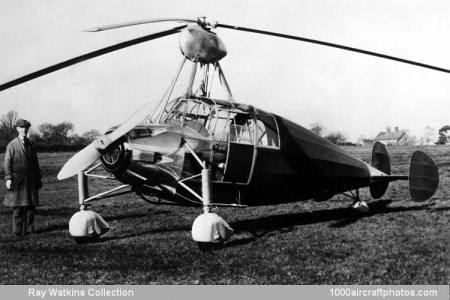Top speed 257 km/h | Manufacturer Cierva Autogiro Company | |
 | ||
The Cierva C.29 was a five-seat British cabin autogyro built in 1934 as a joint venture between Westland Aircraft and Cierva. The rotor system and rotors were designed by Cierva and the fuselage by Westland. It was powered by a 600 hp (447 kW) Armstrong Siddeley Panther II engine with a two-bladed tractor propeller; the engine also drove the three-bladed rotor via a clutched shaft. The C.29 suffered from ground resonance during ground running and was not flown. It was later acquired for evaluation by the Royal Aircraft Establishment but it was unable to cure the resonance problem and the autogyro was scrapped in 1939.
Specifications
Data from Aircraft Data Sheet: Cierva C-29 (1934)]
General characteristics
Performance
References
Cierva C.29 Wikipedia(Text) CC BY-SA
